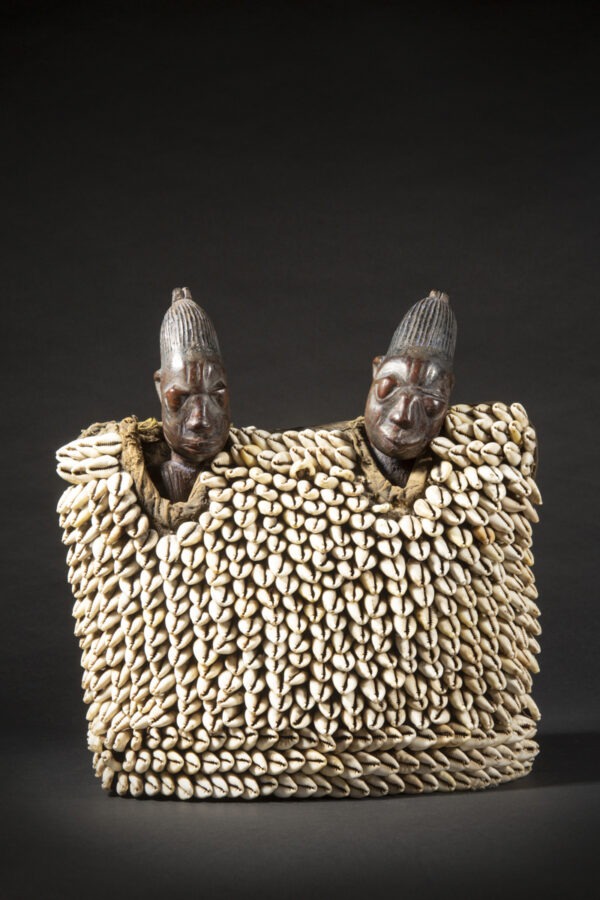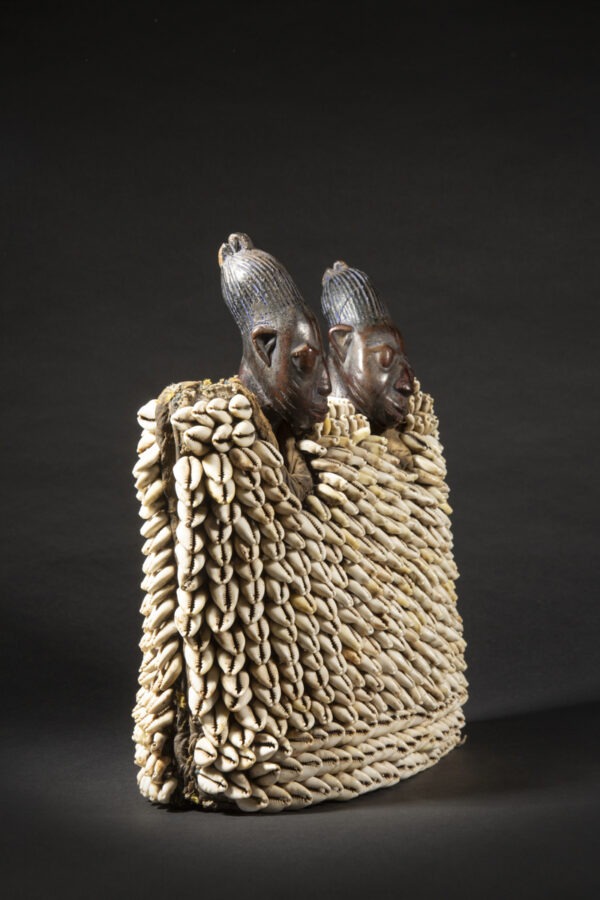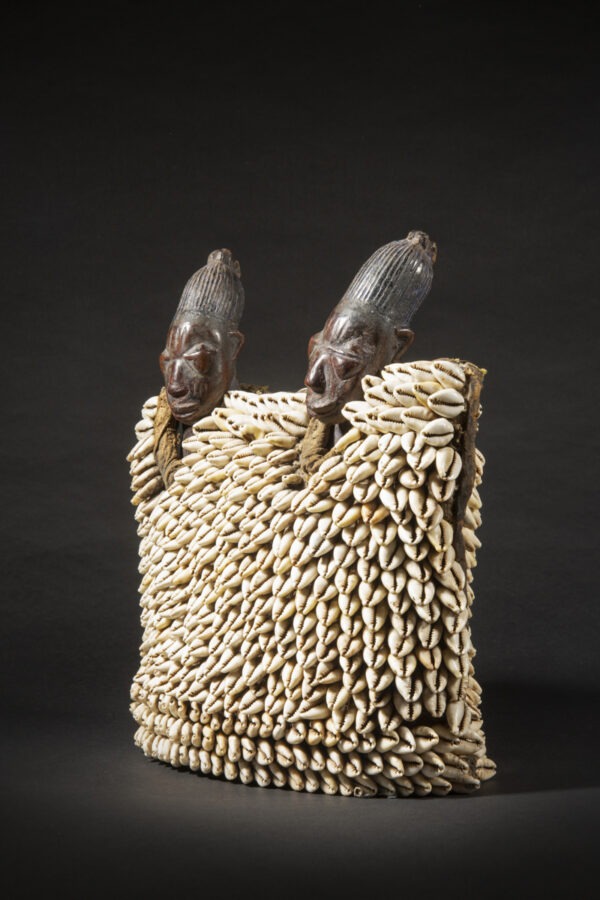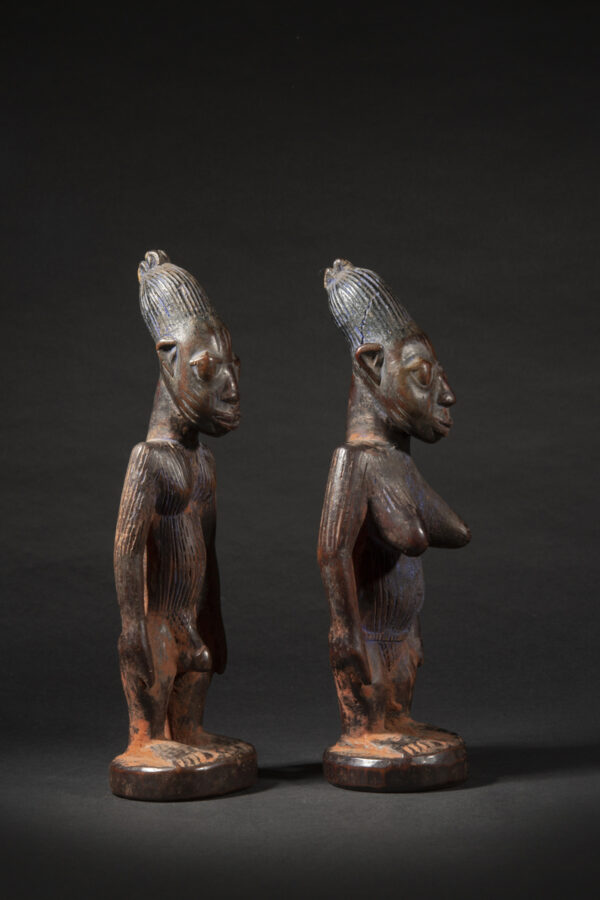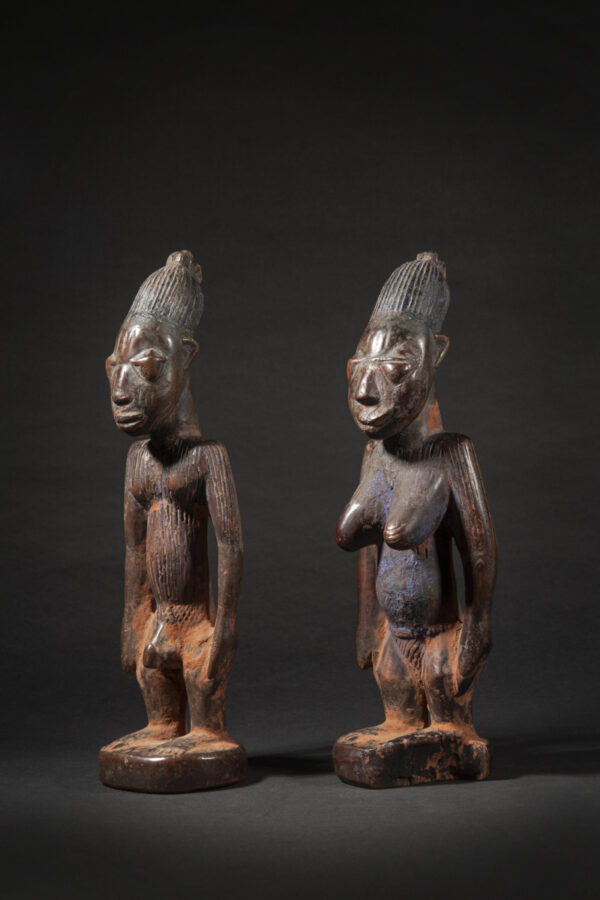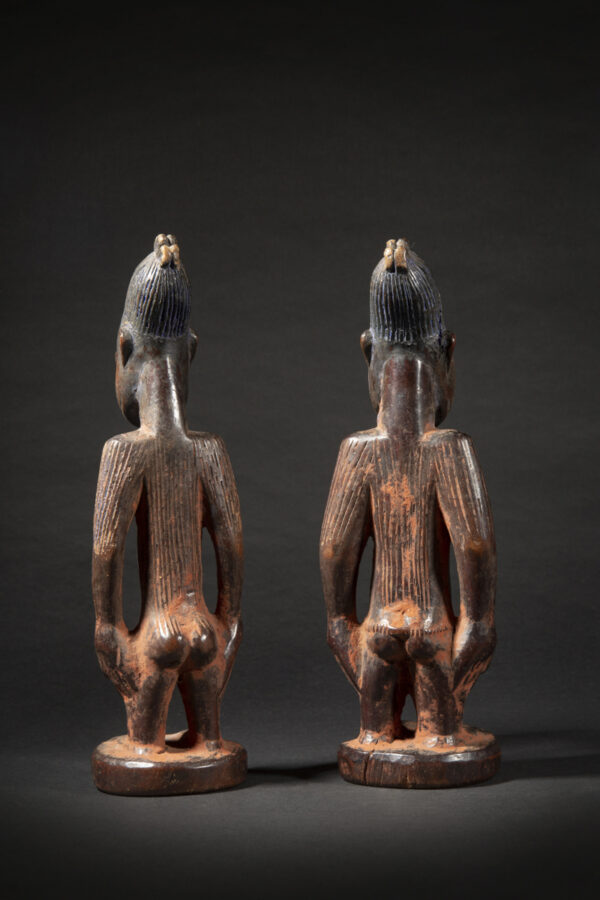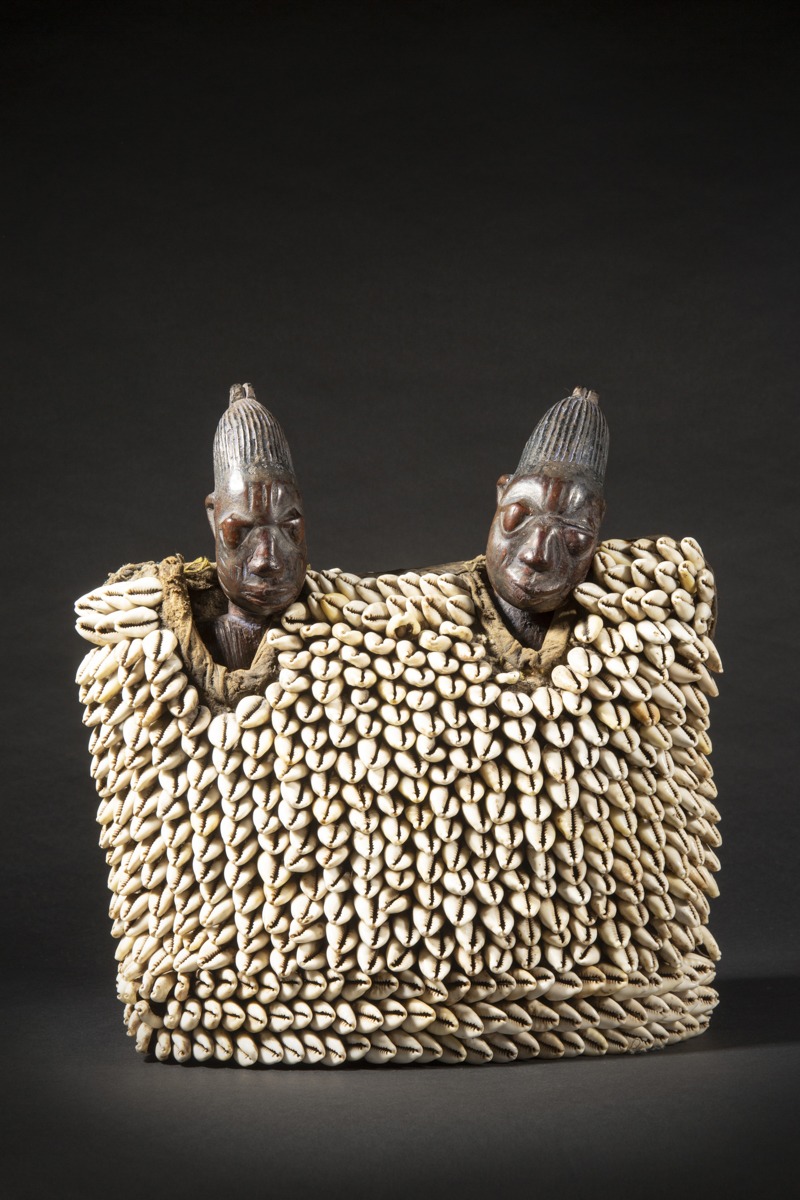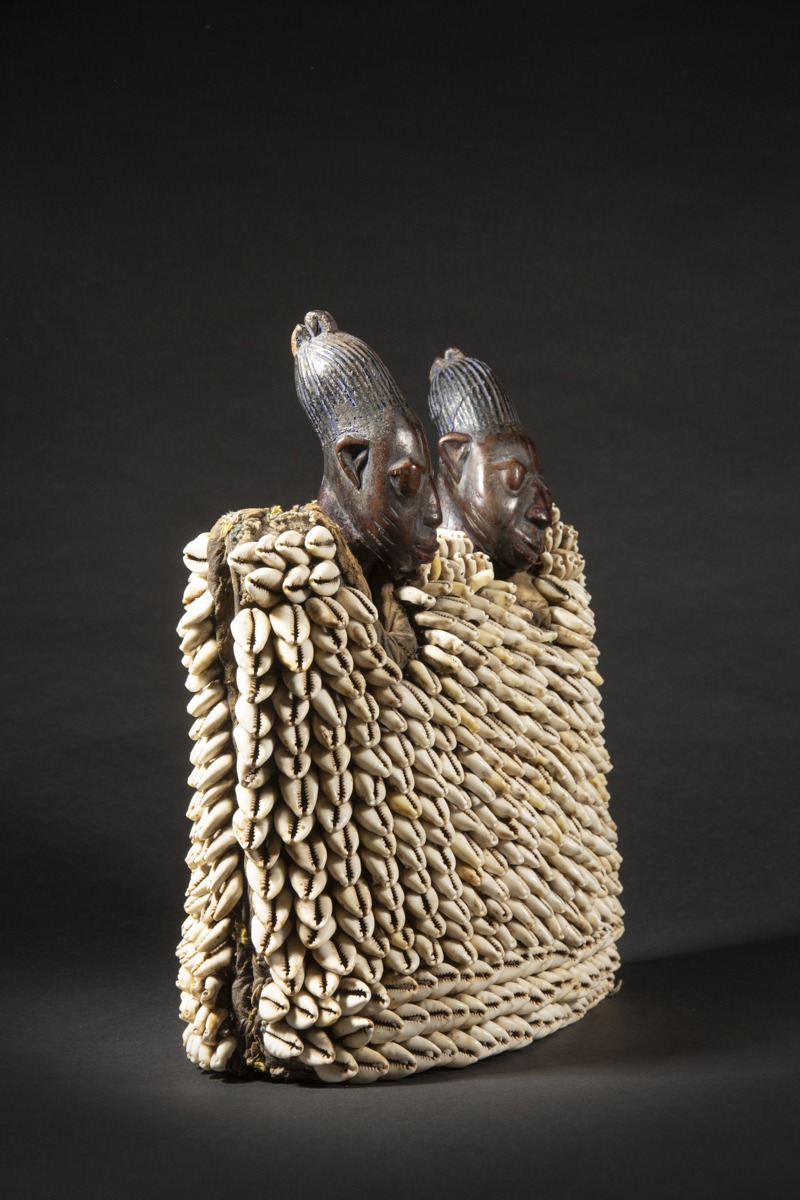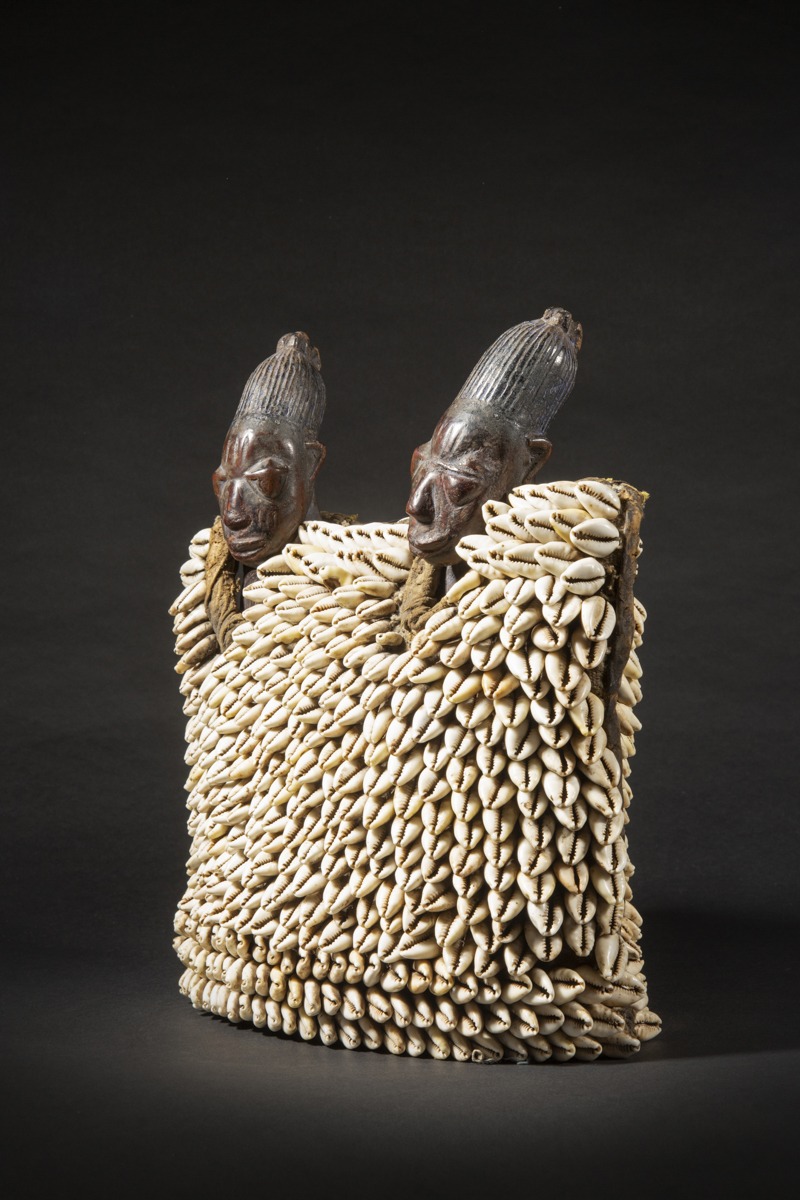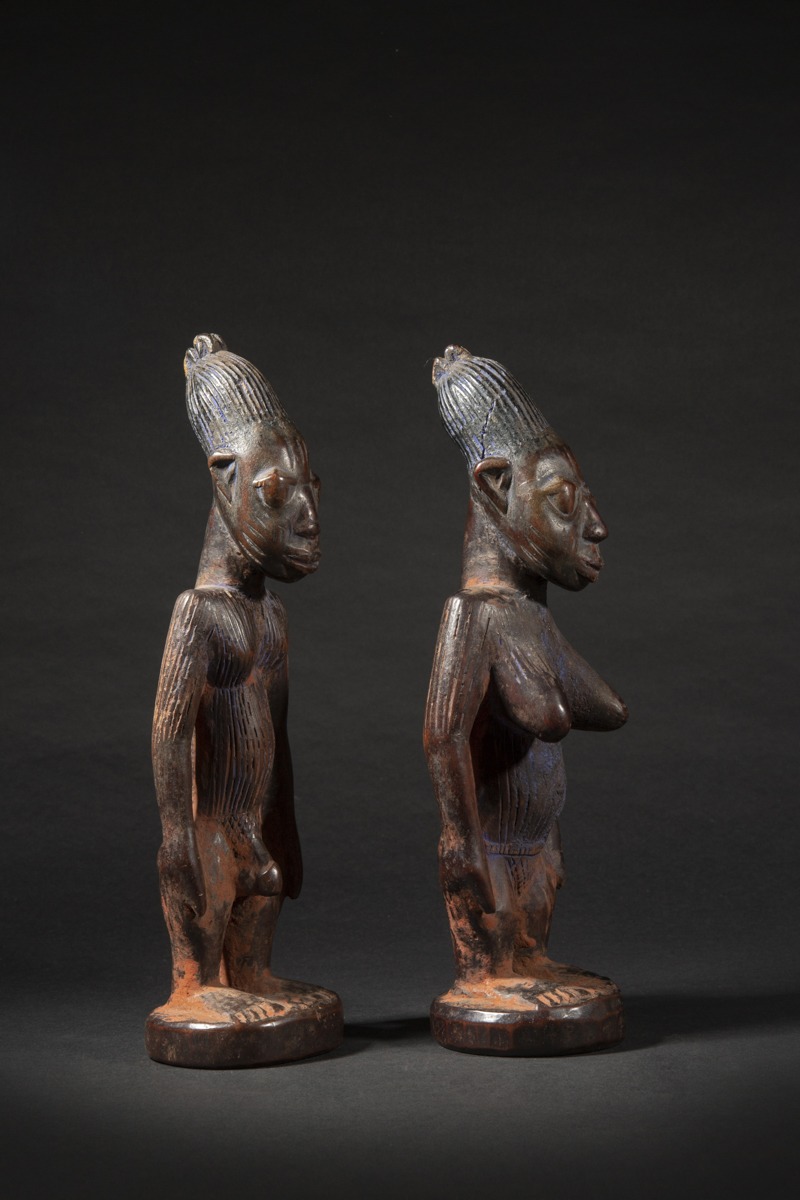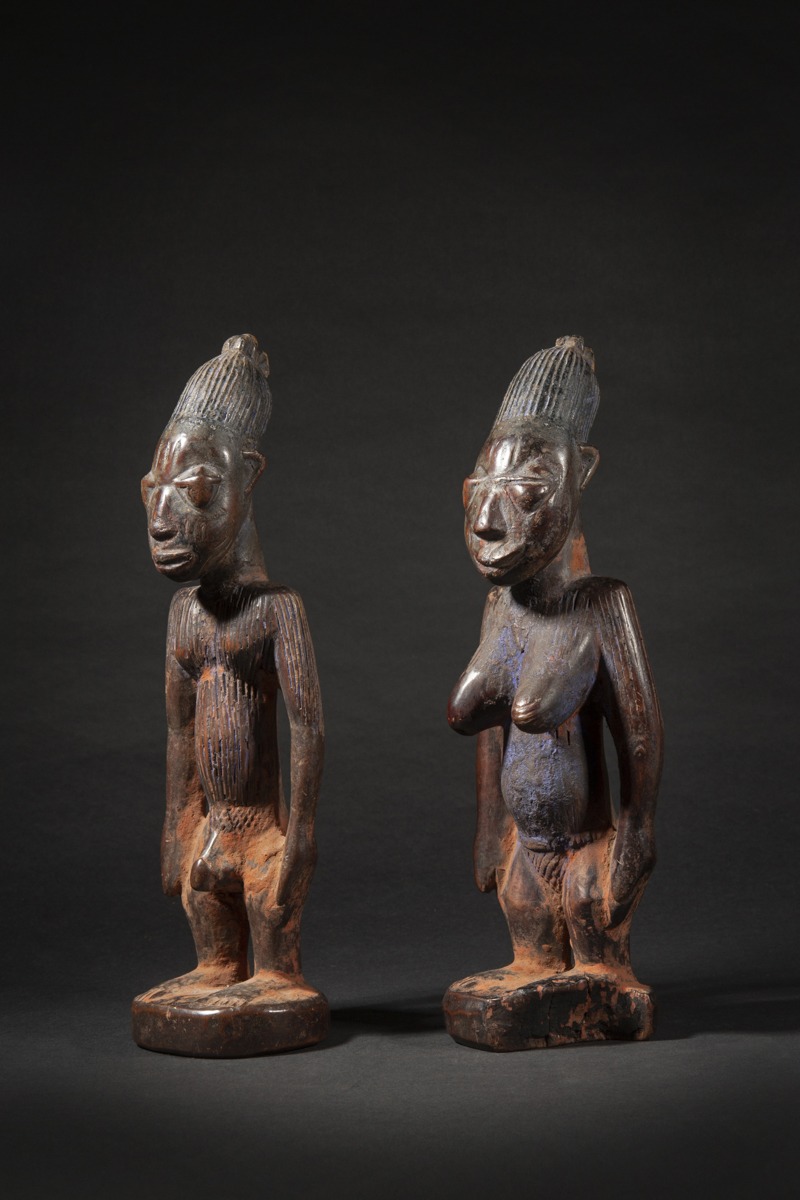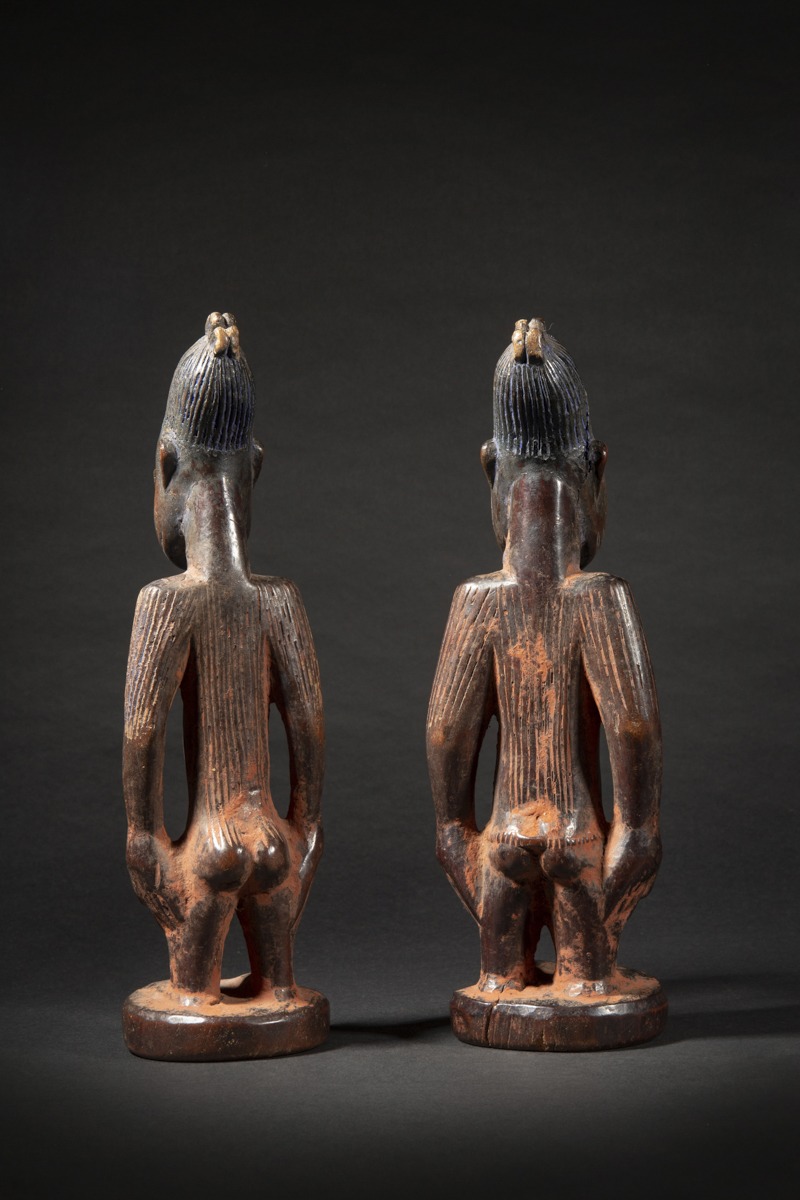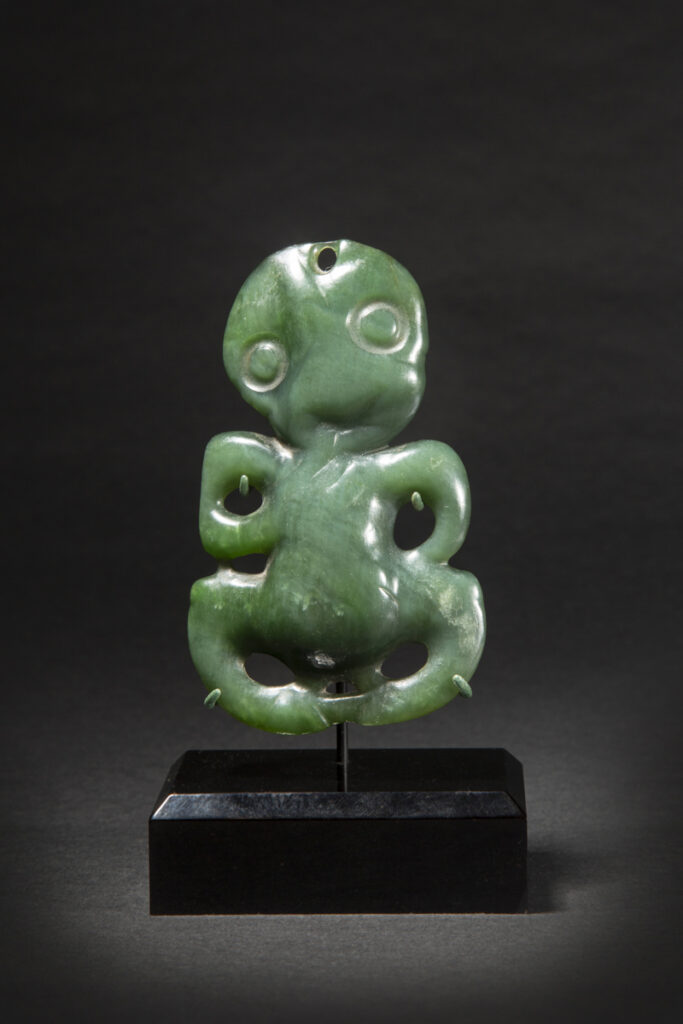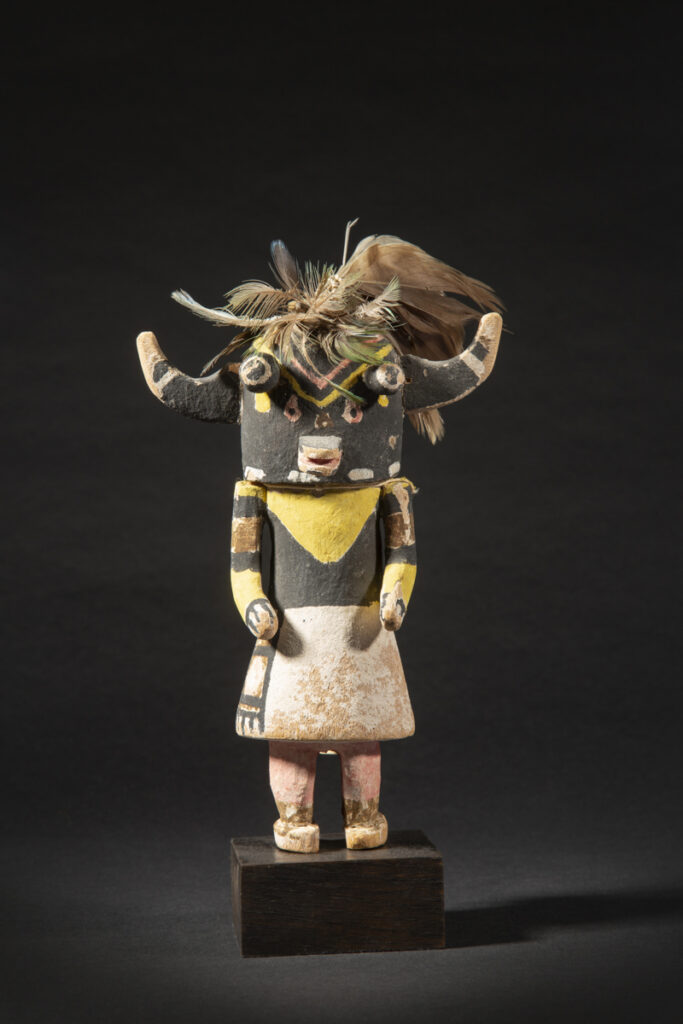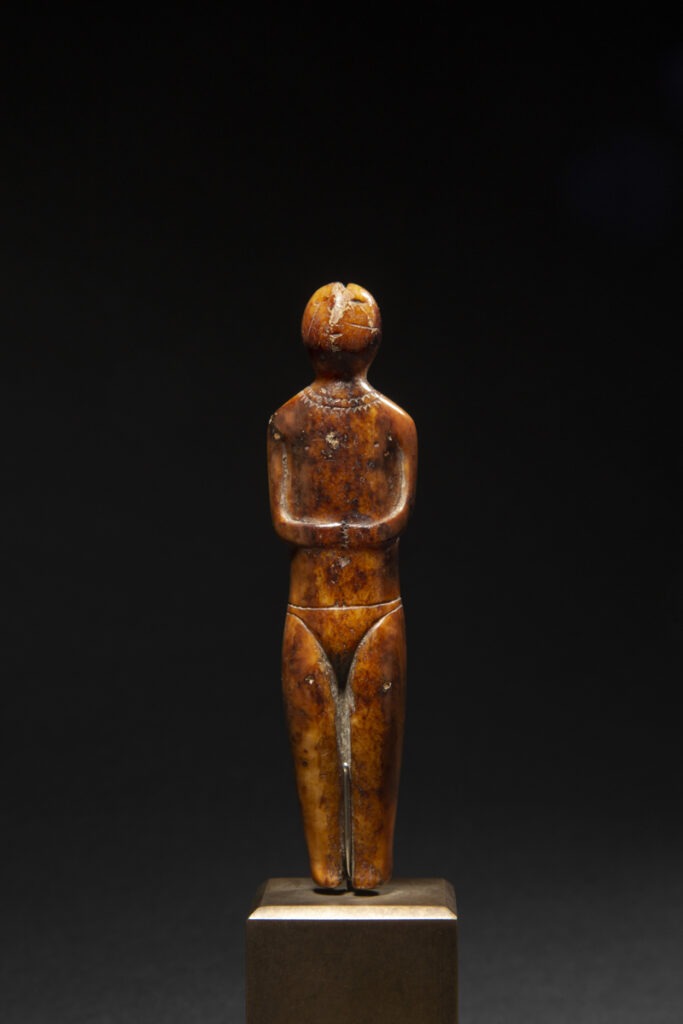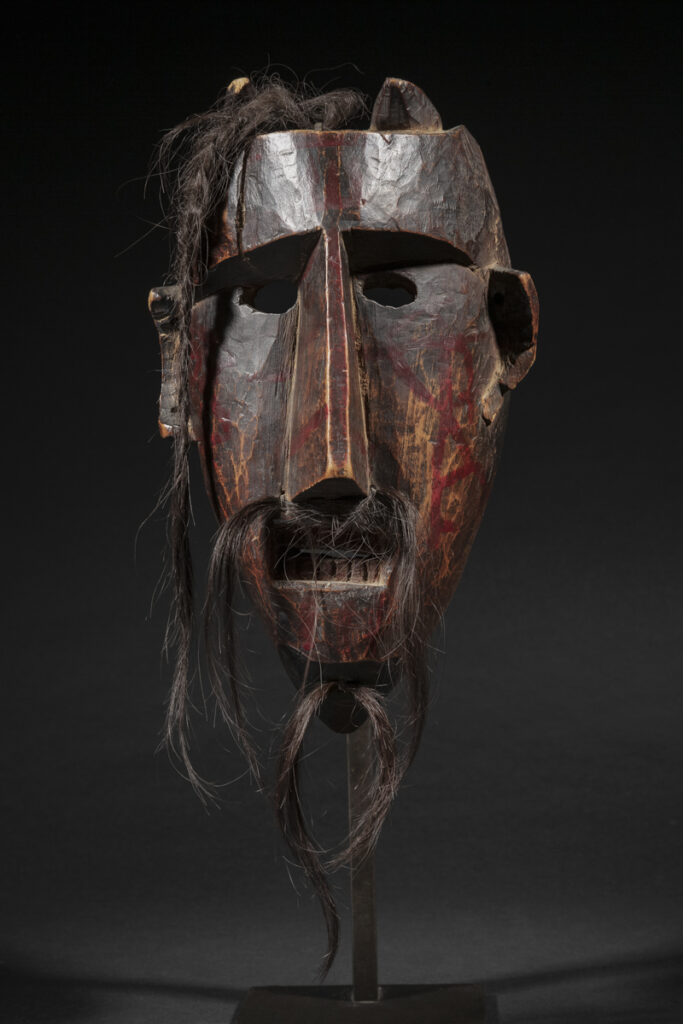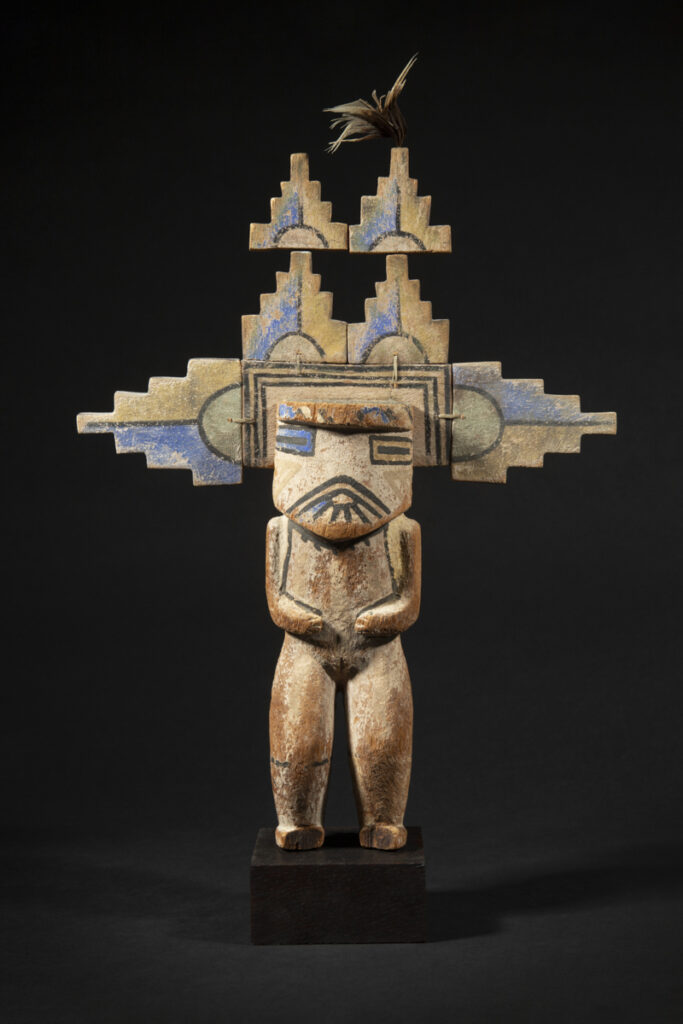Africa | Nigeria
Ibeji
Nigeria
Ere Ibeji twin figures
Yoruba, Omu Aran style
Igbomina area, Nigeria
Early 20th century
Carved wood, pigments, fabric and leather, cowries
Height: 29 cm
Provenance
Ex private collection, The Netherlands
Ex collection Pierre Dartevelle, Brussels
Ex private collection, Paris
Exhibited
BRAFA Art Fair, Galerie Dartevelle, Brussels 2017
Ibeji with coat 29 cm / Galerie Flak
Price on request
The statuettes linked to twin worship, are called ere ibeji in the Yoruba language: ere signifying a sacred image, ibi born and eji a double. Symbols of prestige, wealth and fecundity, ere ibeji figures also guaranteed the perpetuation of future generations. These effigies of ancestors were an integral part of everyday activities, punctuating the family life of the Yoruba.
Subject to very codified rituals, ere ibeji figures were pampered, with their care including feeding, washing and oiling.
They were considered to be living beings. Representations always showed them at the peak of their strength and power in adulthood.
Subject to very codified rituals, ere ibeji figures were pampered, with their care including feeding, washing and oiling.
They were considered to be living beings. Representations always showed them at the peak of their strength and power in adulthood.
Explore the entire collection
